Products > Bus Reset Tool
The Bus Reset Tool is the latest addition to the SCSItoolbox Suite (version 6.0 and higher). With the Bus Reset Tool you can use a variety of methods to issue bus resets to any peripheral bus accessible to the SCSItoolbox.
This page will describe using the Bus Reset Tool graphical user interface, but keep in mind that all of the functionality available via the Bus Reset Tool's GUI is also accessible via function calls to the Developers Toolbox API.
Starting the Reset Tool
The Reset Tool is accessed via the Bus Resets top menu choice in the SCSItoolbox (Version 6.0) – as shown below:

Clicking this choice will start the Bus Reset Tool, which is a separate application program which may be left running or minimized while SCSItoolbox is running.
Navigating the Reset Tool GUI
- Selecting the Host Bus Adapter to reset
Use the slider switch on the right side of the GUI to select which host bus adapter you want to reset. Note – only HBA's that have devices attached will be displayed in the slider switch.
The Bus Reset Tool communicates with the SCSItoolbox, so that when you change busses in the SCSItoolbox (using the Scan System button or main menu Adapter choice) the bus you have currently selected with SCSItoolbox will be selected in the Bus Reset Tool. Of course you may manually select any bus you want at any time.
Also note – the information displayed in the Current State window is information about the Host Bus adapter which is currently selected by the slider switch.
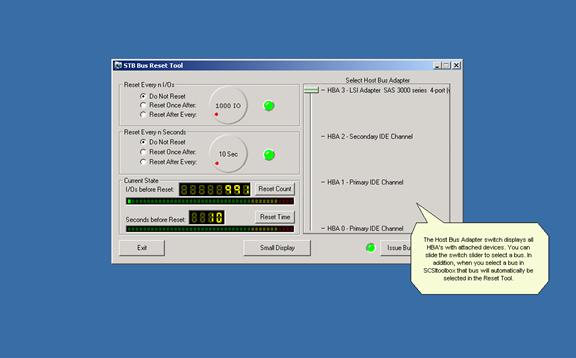
• Manually issuing a Reset
Click the Issue Bus Reset Now at any time to issue a reset to the currently selected bus. The LED next to this button will flash red as the reset is issued, along with the LED in the slider switch selector control.
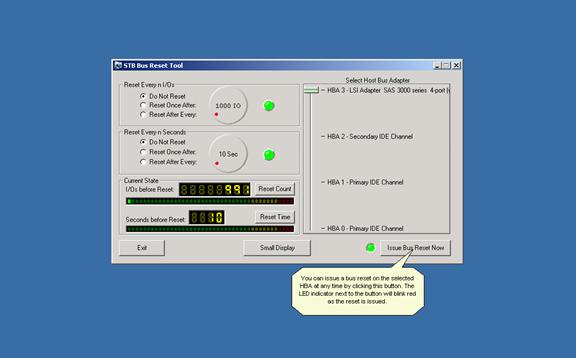
• Automatic Resets
The Automatic reset capability of the Bus Reset Tool is a powerful feature that enables new test scenarios that until now have not been available. Two types of automatic resets are available using the Bus Reset Tool –
Automatic Resets by Time and Automatic Resets by Number of I/Os.
These two options allow you to interrupt any of the tests within the SCSItoolbox with one or more asynchronous bus resets – generated either on a time basis, or generated after a user-specified number of I/Os have occurred on the selected bus.
Reset By Number of I/Os
By using the spinning knob to select the number of I/Os you can issue one reset when that number of I/Os has occurred (up to 1,000,000 I/Os), or you can choose to issue a bus reset each time that number of I/Os has occurred
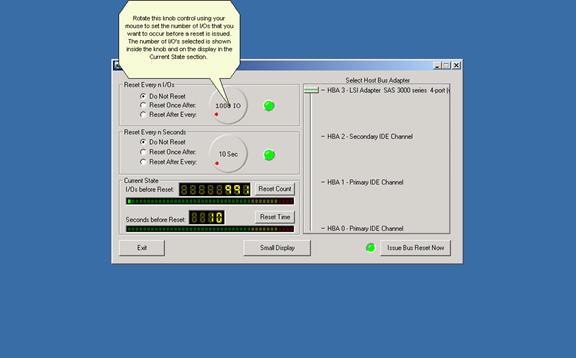
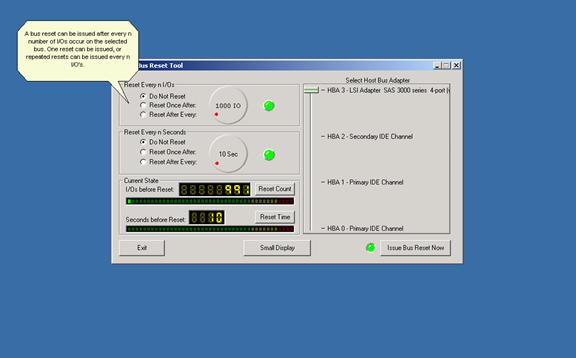
The Bus Reset Tool communicates with the SCSItoolbox to display the number of I/Os left before the reset will be issued.
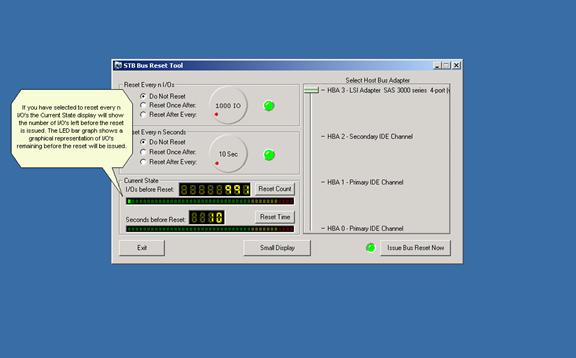
Reset By Number of Seconds
By using the spinning knob to select the number of Seconds you can issue one reset when that number of seconds has passed, or you can choose to issue a bus reset each time that number of seconds has passed.
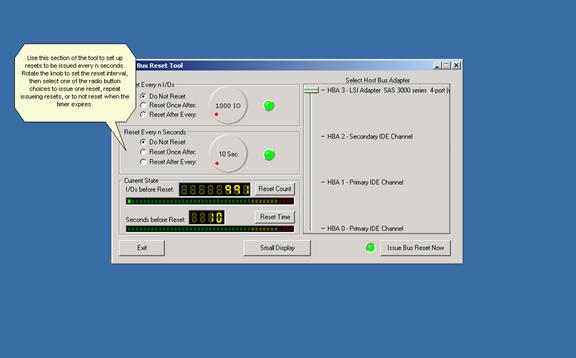
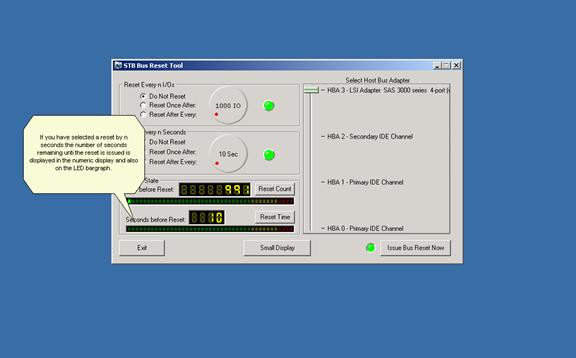
Summary
The Bus Reset Tool allows you to incorporate accurate repeatable bus resets into your test scenarios. The GUI allows quick interactive testing, such as injecting resets randomly during testing CDB operations, or issuing a bus reset before a user-defined CDB to test command compliance.
Being able to issue manual resets, resets by number of I/Os, or resets by time from within a Visual Basic or Visual C++ program using the Developers Toolbox api library brings new levels of sophistication to your manufacturing and ORT test processes.
The Bus Reset Tool works with any peripheral adapter type that supports bus resets – SCSI, Fibre Channel, SAS, ATAPI. For bus types that support device resets like ATA or SATA the Bus Reset Tool issues a Reset Device command.
Protocol Support
- SCSI (All interfaces - single-ended, differential, SCSI 1, 2,
3, wide or narrow devices, Ultra II, Ultra3)
- Fibre Channel (FCAL)
- Magneto Optical (MO)
- Serial Attached SCSI (SAS)
- iSCSI
- Serial ATA (SATA)
- ATAPI
System Requirements
Windows 2000
Windows XP
Windows Server 2000, 2003
Windows Vista
|








